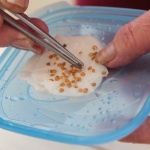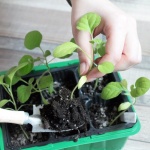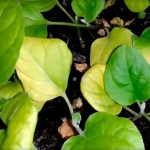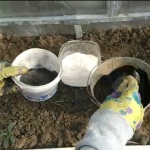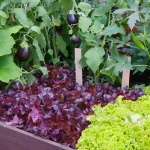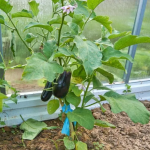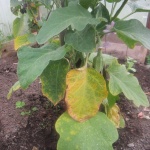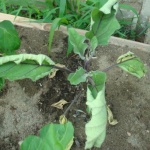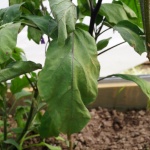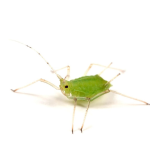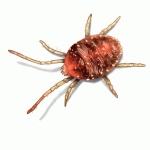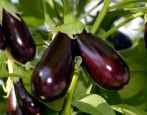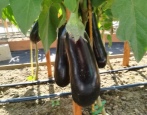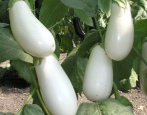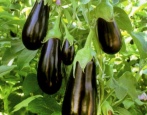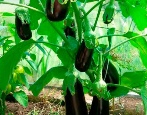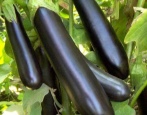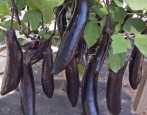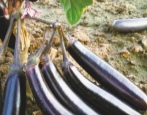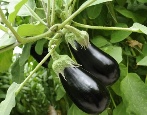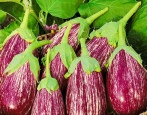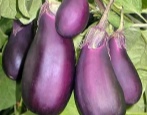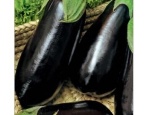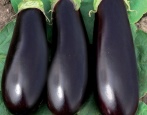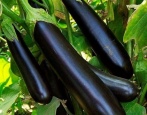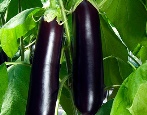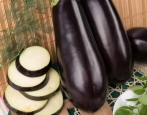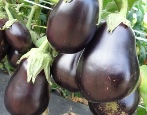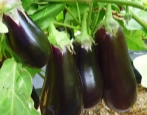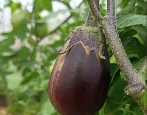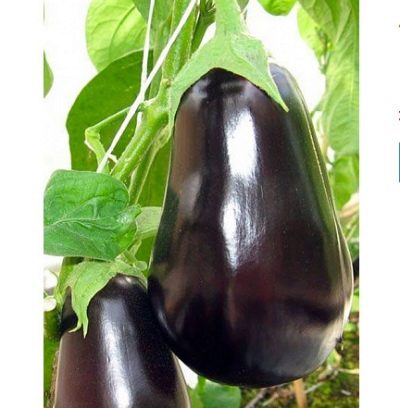
- Authors: Nastenko N.V., Kachainik V.G., Kandoba A.V.
- Year of approval: 2008
- Growth type: medium-sized
- Bush height, cm: up to 70
- Fruit size: large
- Fruit shape: oval
- Fruit weight, g: 290-330
- Yield: high yielding
- Fruit color: purple
- Ripening terms: early
Murzik is an eggplant variety bred by Russian experts and approved for use in 2008. Let's take a closer look at the features of this variety and find out how to achieve a good harvest.
Description of the variety
Murzik can be grown both in open ground and under a film. This is a cold-resistant variety, which is characterized by high yields, excellent fruit set, strong immunity, resistance to temperature extremes, but when growing, keep in mind that one of the most important points is feeding - without this rule, the summer resident will not achieve a bountiful harvest.
Characteristics of the appearance of plants and fruits
The bush is of a medium-sized type, spreading, reaches a height of 70 cm, has stems with anthocyanin coloration and slight pubescence, as well as small wavy green leaves. The fruits are large, oval, weighing 330 g, have a glossy purple skin and dense white flesh.
Purpose and taste
Consumers note the good taste of the fruit without bitterness. Murzik is designed for any type of processing, suitable for baking, roasting or canning.
Ripening terms
This is a variety with an early ripening period, the first fruits can be harvested as early as 95-115 days after the first shoots appear.
Yield
The presented variety is characterized by a high yield; on average, it brings 5-6 kg of vegetables per square meter.
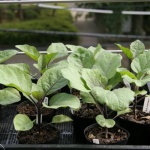
To get a tasty and bountiful eggplant crop, you must first grow strong and healthy seedlings. This culture is considered very capricious, therefore, you need to take care of seedlings when growing at home as correctly and carefully as possible.
Landing scheme
The bushes are placed in well-moistened wells according to the 60x40cm scheme.
Growing and care
Sowing is done in late February - early March. Ready seedlings are planted in a summer cottage from May 20 to June 10. Before sowing, the seeds must be disinfected in a solution of potassium permanganate and processed in a stimulator. Then they are germinated in moist matter for 2-3 days, and then planted in boxes.
Seedling care consists in regular watering and feeding with "Kemira", "Solution" or "Effect". Fertilizers are needed every 10-14 days until the picking stage, which can be carried out already at the two-leaf stage. A few days before planting, the seedlings begin to harden, that is, take them out into the fresh air, every day increasing the time they spend outside from 2 to 12 hours.
Hardened seedlings are planted in a sunny area, a more suitable soil for this variety is black soil.
The first watering after transplanting bushes is needed only after 5-6 days, and then the garden is moistened as it dries - usually a couple of times a week. More abundant and frequent watering is required at the stage of flowering and fruit growth. Do not forget to loosen the soil after irrigation so that oxygen can easily penetrate to the roots.
A rich harvest awaits the summer resident, who pays special attention to feeding.This variety reacts very well to the infusion of bird droppings, ash powder and nitrophoska. During the flowering period, potassium sulfate or superphosphates are more suitable. To strengthen the ovaries, it is recommended to treat the plant with boric acid.
Another important point is the formation of a bush. It is formed into two stems, first you need to eliminate the stepsons and shoots that grow inward, and then remove the leaves before the first fork.
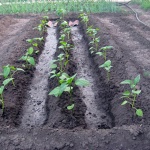
Planting eggplant is one of the most important stages in growing. When choosing a place for eggplants on your site, it is important to remember that this culture should be in warm soil, constantly illuminated by the sun. The plant is also very fond of spacious, open spaces, since its roots can grow over sufficient areas.
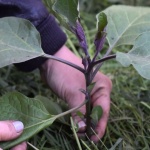
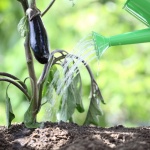
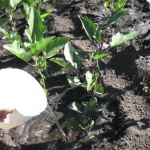
Disease and pest resistance
The Murzik variety tolerates adverse weather conditions well, it is rarely exposed to infections, and yet additional preventive measures will be useful. So, with prolonged rains, gardeners are advised to treat the ridge with fungicides - this will prevent the occurrence of late blight and various rot. In case of damage to the plant, you can use the means "Quadris", "Ridomil", "Acrobat".
Also, to prevent ailments, select healthy seed for sowing, disinfect the soil before planting in the greenhouse, carefully weed out the weeds, avoid overflows and keep the area clean.

Eggplant is one of the most demanding crops. For its successful cultivation, it is necessary to create optimal conditions, as well as to carry out prevention and fight against diseases and pests. Eggplant often infects both fungal and viral diseases. If treatment is not started on time, you can completely lose the crop.
